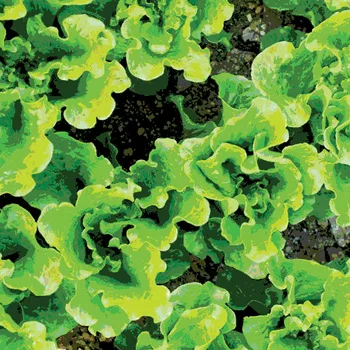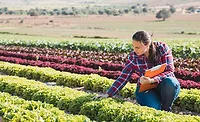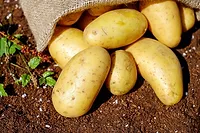Raw Produce Field Sampling for Biological Risks

A primary requirement for a comprehensive food safety management system for raw produce is the verification and validation of certain processing steps. The method of verification and validation is often achieved by testing a multitude of criteria, benchmarks or specifications necessitated by the process in question. When testing is needed, sampling is a required and essential first step. Regardless if the verification or validation of these processing steps is process control points or Critical Control Points, the fact remains that if a sample is not taken with a specific objective or purpose in mind, the test and the subsequent analytical result may be misleading, not representative and/or meaningless altogether.
We’re not going to discuss the merits or disadvantages of testing. What we are here to discuss is that, too often, when testing is needed, sampling or the sampling process is not deliberated, not considered and generally overlooked. Hence, sampling may become the weakest link in this important analytical chain. The weakness is that an analytical testing method may address the “who, what and why” for a sample but not necessarily the “where, when and how” to sample. Not knowing the “where, when and how” for a sample may lead to inaccuracies, errors and confusion in interpreting the analytical result.
Testing results or analytics are like audits: they are snapshots in time. As with audits, the depth, magnitude and frequency of sampling, and thus the analytics, may provide one with a justifiable representation of how robust a food safety management system is and how safe the end product will be. It stands to reason that the larger the size and the more frequently the samples are taken, the more accurate the resulting interpretations will be. Unfortunately, a sampling and testing plan of intense frequency, depth and magnitude, while beneficial, is usually quite cost prohibitive.
In the Beginning
Let’s start with the end result in mind. As we know, food safety risks can be divided into three major categories: physical risks, chemical risks and biological risks. One method of monitoring these risks is to rely on a testing program to obtain analytical results for the various risk variables that may be controlled by prerequisite steps or by one or more kill steps. Assuming that we know what type of analyte we wish to test for, the immediate question should be: How do we sample the process, product or commodity to provide the most representative snapshot and, thus, the most representative result for the analyte in question?
Let’s evaluate the above question by reviewing how the three food safety risk categories most often manifest in processes. It can be safely said that physical and chemical risks or contamination usually occur with much more homogeneity in processes than do biological risks. Biological risks, however, are known to be sporadic and difficult to isolate. Immediately, we realize that sampling for biological risks will be like sampling for the proverbial needle in a haystack. It also stands to reason that it would be much easier to find a negative biological analytical result than a positive biological result, which, unfortunately, may encourage a false sense of security. While we can sample for physical and chemical risks by following a statistical and/or a random number-generator sampling plan, sampling for biological risks is much more challenging. For example, the common Z-pattern field-sampling approach,[1, 2] while effective for pest management and thus chemical residue sampling, may not be sufficient to sample for a biological risk. That said, how does one approach field sampling for biological pathogens? Before we answer this question, let’s explore other considerations.
Sampling with a Purpose: The Why, Where and When
As the title indicates, one should sample raw produce fields with a purpose. That is, why do we sample? There are two reasons: We sample either for monitoring purposes or for forensic purposes (such as when we encounter a recall issue). Either purpose requires consideration of the federal Reportable Food Registry reporting requirements, which is a federal mandate to report any foodborne pathogen found on a product destined for consumption that is in the channels of trade and not within the producer’s complete control to mitigate further distribution. If one wants to test and sample for a foodborne pathogen, regardless of where the product or the process affecting the product is within the supply chain, it is advisable to have a positive release policy in place to ensure that the product does not enter the channels of trade should a contaminant of some type be encountered.
Keeping this mandate in mind, we now know the when to sample, which is at the time we still have complete control of the distribution of all items produced. If we do not have complete control of the distribution of all items produced, we need to step farther back in the process and reconsider where to sample. Perhaps we must sample much earlier in the process or supply chain to determine and understand the baseline risk of distribution control. Thus, the when to sample is at the point of complete control of product distribution, and the where to sample is at the earliest point in this production process. The reason it is important to sample at the point of complete distribution control is when the purpose of sampling is to analyze for foodborne pathogens. In that case, it is recommended to enforce a positive release policy to lessen the accidental distribution of contaminated product entering the supply chain and the channels of trade. Thus, sampling at the point of distribution control enables one to implement a positive release policy. Combining the when and the where considerations isolates the field sampling process as close to the harvest event as possible while providing sufficient time for laboratory results turnaround so as not to delay harvest plans, to still have control of product distribution, and, hence, to reduce the possibility of contaminated product entering the channels of trade.
The Analysis: The What
The next question is what analyte (biological risk or foodborne pathogen) and what type of sample should be analyzed? In considering which analyte to analyze, we have two options to consider. Each analyte requires a different action and action plan when the result is determined. One option is to analyze for an indicator microbe, that is, one mimicking a biological risk or foodborne pathogen. The other option is to analyze for the biological risk or foodborne pathogen directly.
First, let me say there is no right or wrong option, just different strategies to achieve different purposes. Should we decide to analyze for the indicator microbe, a stepped-up sanitation plan may need to be implemented when action levels are crossed. Note that these action levels are determined by a baseline microbe population level within the area sampled. Should we decide to analyze for a foodborne pathogen, a positive release policy, a potential recall action and the federal Reportable Food Registry requirement should all be kept in mind. In considering what type of sample to analyze, analytical results for the different types of samples command distinct and diverse actions and/or corrective actions. For example, in the case of a foodborne pathogen analyte, the focus centers on the control of end-product distribution. The action plans for maintaining distribution control are specific for the type of samples tested. For instance, if a positive result for a foodborne pathogen is found in soil samples, do we destroy all the product grown in that soil? By the same token, if the irrigation water is sampled, and a foodborne pathogen is found in the water samples, do we destroy the entire crop irrigated by this water? What if we sampled the product/crop? Did we or can we isolate the lot or acreage sampled so that we can eliminate the potential contaminated lot from the rest of the field to be harvested? When a foodborne pathogen is found, do we then proceed in a forensic mode and widen our sampling plan? How will this result impact the remainder of the crop?
It quickly becomes clear that we must adopt a what-if strategy when we design a sampling plan as to what we actually propose to sample. Similarly, if we decide to test for an indicator microbe, specific action thresholds must be established for the sample type. How does one establish action thresholds for indicator microbe levels? The answer is to establish a general baseline population of this microbe on the sample of interest. For example, one can establish the generic Escherichia coli population on a leafy green in a specific growing area throughout a growing season. Establishing baseline populations and action thresholds is another topic on its own and beyond the scope of this article. Suffice it to say that when deciding what to analyze (analyte and type of sample), considerable thought needs to be involved because differing action plans or corrective action plans must be initiated based upon the analytical end results.
The Sampling Process: The How
This brings us back to the how to sample.
Keeping in mind that biological risks are sporadic and infrequent, the odds of finding a representative analytical result become slim to none when a sampling plan is followed without an in-depth review of environmental risk factors. Before any sampling plan is developed, statistical or random, it behooves you to thoroughly walk the field to be sampled and plot a risk map according to exposure or influence from biological risks. For example, within a 20-acre lot, hot spots may be present such as a one-acre exposure to bird droppings due to the presence of a nearby telephone pole or a two-acre depression where water and debris naturally accumulate, etc. These hot spots must be mapped, identified and ranked as high-, medium- and low-risk areas. Next, convert these high-, medium- and low-risk areas to economics—income dollar production. Converting these ranked areas to monetary terms clarifies the potential economic risks from samples taken within these areas, as the analytical results mandate certain actions. It is also easy to see that you may want to be as detailed as possible in mapping these areas. Once the maps are developed, you can develop a sampling plan that results in more comprehensive sampling with larger magnitudes and higher frequencies in higher-risk areas. Not only does it make more economical sense to sample and test according to risk, but also it becomes a much more manageable task for the execution of action plans, such as the implementation of a positive release policy. Additionally, when the incremental cost of risk (crop destruction), cost of positive release implementation (potential harvest delay) plus the cost of sampling and analysis are all weighed against income dollar production, a management decision can be formulated whether to retain the commodity from that particular parcel. It may be more cost effective to discard the commodity and/or not plant in these risk-identified areas.
Sampling Personnel: The Who
The last question to ask is who the sampling entity should be and who should perform the analytical process. We have two options, which are again economically driven. Sampling can be performed in-house (an economical solution) or by a disinterested third party (a more costly approach). The analytical process can also be performed in-house or by a commercial laboratory, with similar economic ramifications. Again, there are no wrong answers, just different strategies and economics to consider. The decision as to which strategy to use is a matter of legal liability based on analytical results and the applicable action plan(s). For instance, if the purpose of sampling is to monitor indicator microbe levels, in-house sampling and analysis may be sufficient as long as the level of competency of the sampler and the in-house laboratory is commensurate to the sampling and analytical procedure. Should this strategy be followed, it is recommended that frequent blind samples be sent to a state-certified third-party laboratory to validate the in-house laboratory performance. Similarly, a third-party sampler should perform side-by-side sampling to validate the in-house sampling procedure. When wishing to analyze for a foodborne pathogen, due to the complexity of analytical procedures, it is advised that analysis and sampling be performed by a state-certified laboratory proficient in analyzing said analyte for the particular sample type. When engaging a California state-certified laboratory to perform said analysis, additional reporting liability needs to be considered. Aside from the federal Reportable Food Registry reporting requirements, a California state-certified laboratory (in-house and third-party alike) has the obligation to report any out-of-compliance foodborne pathogen to the California State Department of Agriculture.
Conclusions
The sampling process for raw produce for the purpose of verifying and validating a food safety management system to yield a food-safe product is not to be overlooked and should not be considered an insignificant challenge. The who, how, what, where, when and why to sample cannot be taken lightly, as the ramifications of the analytical results when a sampling plan is not well planned can produce a devastating blow, not just for the producer but for an entire industry. To design and develop a thorough, complete and representative sampling process, one must take the time to plan, spell out the purpose, state the objective, define the results and ask the difficult questions. A well-planned sampling program will not only achieve the purpose, objective and anticipated results but will also sustain and maintain a sound analytical process representative of the food safety management system it is designed to verify and validate. Think about it!

References
1. www.extension.org/pages/19198/overview-of-monitoring-and-identification-techniques-for-insect-pests.
2. www.btny.purdue.edu/pubs/vegcrop/VCH2005/VCH447.pdf.
Looking for quick answers on food safety topics?
Try Ask FSM, our new smart AI search tool.
Ask FSM →








